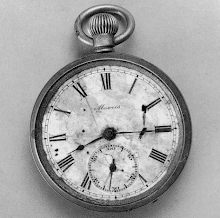skip to main |
skip to sidebar
A state agency has lowered the Public Health Goal for perchlorate, a dangerous pollutant found in many underground water basins across the Southland ... The goal was lowered Friday from 6 parts per billion to 1 part per billion, officials announced ... The Office of Environmental Health Hazard Assessment updated its Public Health Goal based on “the inhibition iodide uptake into the thyroid gland and the consequent disruption of thyroid hormone production,” the agency said in a statement. The PHG update considers recent research providing new information on exposures to and possible effects of perchlorate, focusing on infants, the agency said.
Jim Steinberg
San Bernardino County Sun
February 27, 2015
The Office of Environmental Health Hazard Assessment today published an updated public health goal (PHG) of 1 part per billion for perchlorate in drinking water ... The updated PHG is lower than the previous goal because it incorporates new research about the effects of perchlorate on infants. Like the previous PHG, the updated PHG takes into account exposure from all sources of perchlorate including food ... “This updated public health goal reflects infants’ increased susceptibility to the health effects of perchlorate,” said OEHHA Director Dr. George Alexeeff. “It is set at a level that would provide health protection for people of all ages.”
b.jpg)
... Perchlorate is known to block the thyroid’s ability to take in and process iodide, which is a nutrient essential to brain development, growth, heart function, and other systems. Studies conducted by OEHHA scientists and others have revealed that perchlorate can harm the health of infants at lower levels than the levels that are harmful to healthy adults. OEHHA’s updated PHG incorporates new data on how much water infants consume per kilogram of body weight. It also considers infants’ intake of perchlorate from infant formula reconstituted with tap water.
The U.S. Army Corps of Engineers announced it will release an updated report about the progress of World War I munitions cleanup around AU and Spring Valley on March 10 ... The report is part of a regulatory process overseen by the Environmental Protection Agency and D.C. District Department of the Environment to determine if more cleanup efforts are required, according to Andrea Takash, a spokesperson for the U.S. Army Corps segment that is overseeing the cleanup ... Takash said: “We have been talking about this remedial investigation report for over a year. What is new is there are about 100 properties that this report will identify as properties that [the U.S. Army Corps] will want to look at further” ...
.jpg)
The sites of former weapons usage and disposal, the U.S. Army Corps has determined, need further evaluation about potential contamination or buried munitions, according to Takash. Among the properties that will be examined and included in the remedial report are portions of the AU campus near Kreeger and Watkins Halls. The March 10 report will include an overview of the project, analysis on findings and future plans and expectations for cleanup, as well as updated evaluation about the AU sites. The properties identified for further evaluation will be notified and informed before the report is released to the public.
Katherine Saltzman
The Eagle
February 16, 2015
Many may have read the NW Current article in the January 21 issue ... We would like to clarify that the areas noted in the article are general locations that underwent focused evaluations in the report, not the recommendations made by the U.S. Army Corps of Engineers for further investigation. The Site-Wide Remedial Investigation report recommendations will be provided at the March 10 Restoration Advisory Board meeting and will be further discussed and presented at a community meeting during the 45-day public comment period this spring. The report is currently being reviewed by our project regulatory partners (EPA and D.C. District Department of the Environment). Comments are expected from the regulatory stakeholders in February. We hope to address comments and obtain regulator concurrence sometime in March.
 Free Hit Counter
Free Hit Counter
a.jpg)
b.jpg)
.jpg)
b.jpg)


